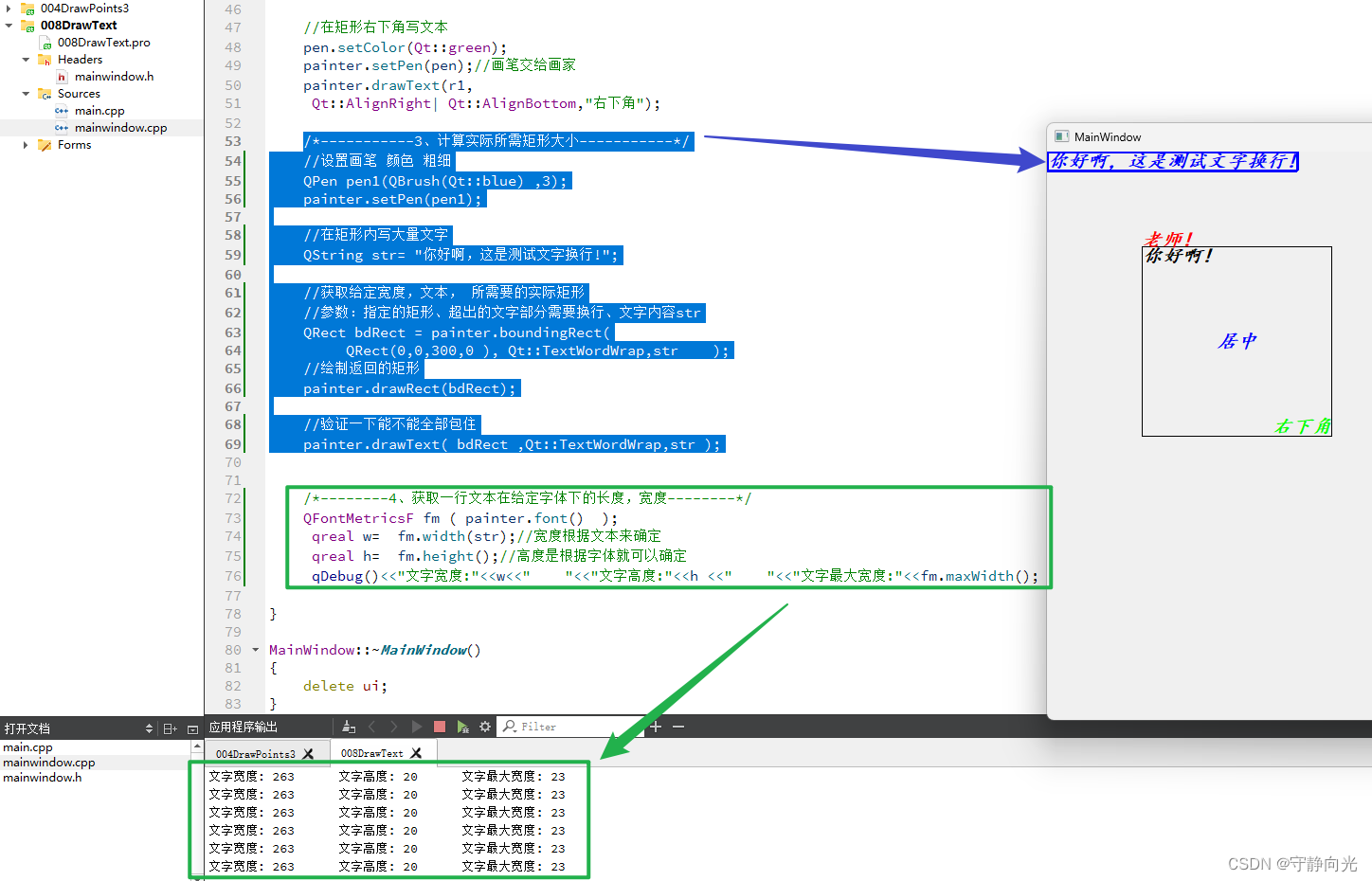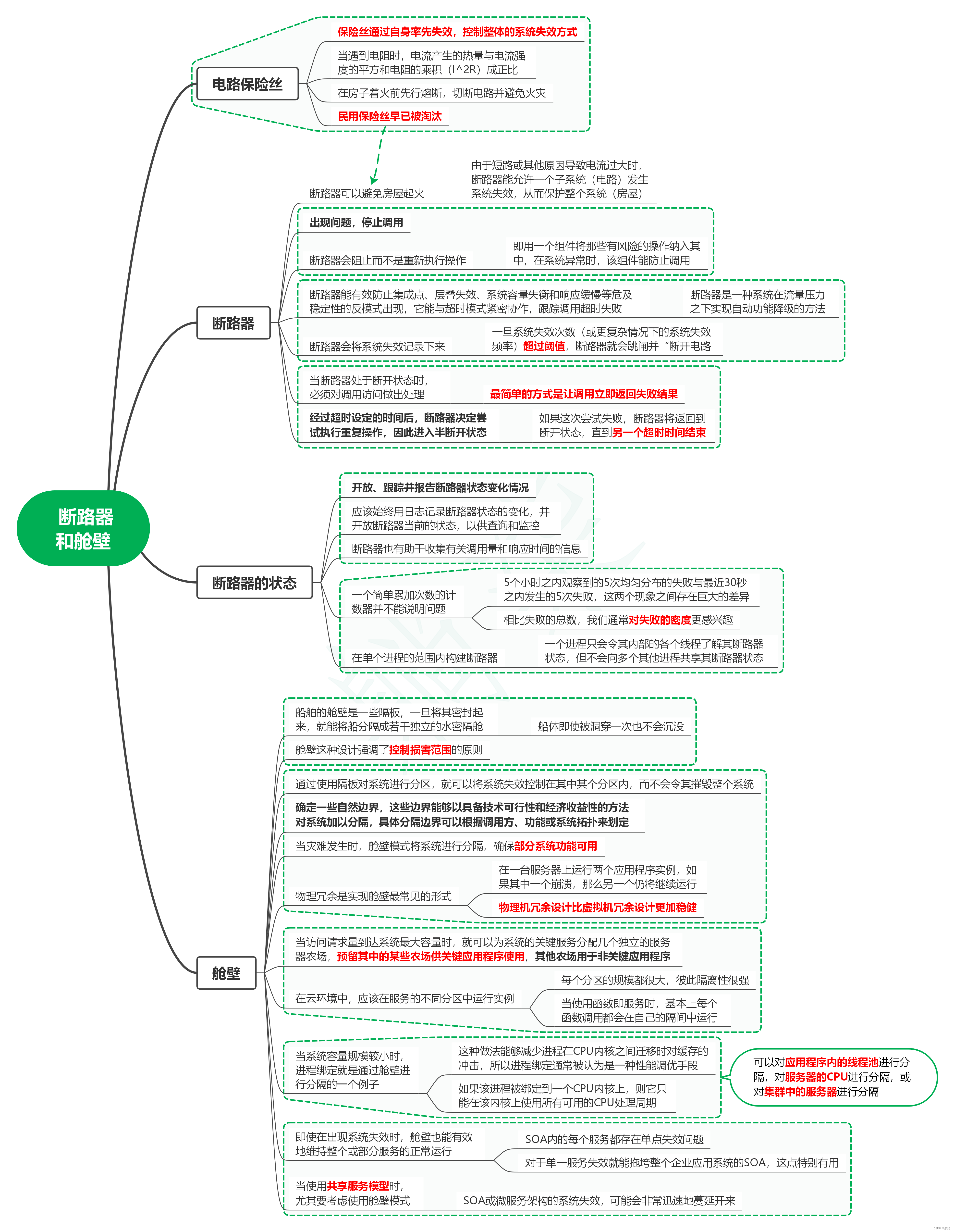使用自定义 C++ 类扩展 TorchScript
本教程是自定义运算符教程的后续教程,并介绍了我们为将 C++ 类同时绑定到 TorchScript 和 Python 而构建的 API。 该 API 与pybind11非常相似,如果您熟悉该系统,则大多数概念都将转移过来。
用 C++ 实现和绑定类
在本教程中,我们将定义一个简单的 C++ 类,该类在成员变量中保持持久状态。
// This header is all you need to do the C++ portions of this
// tutorial
#include <torch/script.h>
// This header is what defines the custom class registration
// behavior specifically. script.h already includes this, but
// we include it here so you know it exists in case you want
// to look at the API or implementation.
#include <torch/custom_class.h>#include <string>
#include <vector>template <class T>
struct MyStackClass : torch::CustomClassHolder {std::vector<T> stack_;MyStackClass(std::vector<T> init) : stack_(init.begin(), init.end()) {}void push(T x) {stack_.push_back(x);}T pop() {auto val = stack_.back();stack_.pop_back();return val;}c10::intrusive_ptr<MyStackClass> clone() const {return c10::make_intrusive<MyStackClass>(stack_);}void merge(const c10::intrusive_ptr<MyStackClass>& c) {for (auto& elem : c->stack_) {push(elem);}}
};有几件事要注意:
torch/custom_class.h是您需要使用自定义类扩展 TorchScript 的标头。- 注意,无论何时使用自定义类的实例,我们都通过
c10::intrusive_ptr<>的实例来实现。 可以将intrusive_ptr视为类似于std::shared_ptr的智能指针,但是引用计数直接存储在对象中,而不是单独的元数据块(如std::shared_ptr中所做的。torch::Tensor内部使用相同的指针类型 ;和自定义类也必须使用此指针类型,以便我们可以一致地管理不同的对象类型。 - 注意的第二件事是用户定义的类必须继承
torch::CustomClassHolder。 这样可以确保自定义类具有存储引用计数的空间。
现在让我们看一下如何使该类对 TorchScript 可见,该过程称为绑定该类:
// Notice a few things:
// - We pass the class to be registered as a template parameter to
// `torch::class_`. In this instance, we've passed the
// specialization of the MyStackClass class ``MyStackClass<std::string>``.
// In general, you cannot register a non-specialized template
// class. For non-templated classes, you can just pass the
// class name directly as the template parameter.
// - The arguments passed to the constructor make up the "qualified name"
// of the class. In this case, the registered class will appear in
// Python and C++ as `torch.classes.my_classes.MyStackClass`. We call
// the first argument the "namespace" and the second argument the
// actual class name.
TORCH_LIBRARY(my_classes, m) {m.class_<MyStackClass<std::string>>("MyStackClass")// The following line registers the contructor of our MyStackClass// class that takes a single `std::vector<std::string>` argument,// i.e. it exposes the C++ method `MyStackClass(std::vector<T> init)`.// Currently, we do not support registering overloaded// constructors, so for now you can only `def()` one instance of// `torch::init`..def(torch::init<std::vector<std::string>>())// The next line registers a stateless (i.e. no captures) C++ lambda// function as a method. Note that a lambda function must take a// `c10::intrusive_ptr<YourClass>` (or some const/ref version of that)// as the first argument. Other arguments can be whatever you want..def("top", [](const c10::intrusive_ptr<MyStackClass<std::string>>& self) {return self->stack_.back();})// The following four lines expose methods of the MyStackClass<std::string>// class as-is. `torch::class_` will automatically examine the// argument and return types of the passed-in method pointers and// expose these to Python and TorchScript accordingly. Finally, notice// that we must take the *address* of the fully-qualified method name,// i.e. use the unary `&` operator, due to C++ typing rules..def("push", &MyStackClass<std::string>::push).def("pop", &MyStackClass<std::string>::pop).def("clone", &MyStackClass<std::string>::clone).def("merge", &MyStackClass<std::string>::merge);
}使用 CMake 将示例构建为 C++ 项目
现在,我们将使用 CMake 构建系统来构建上述 C++ 代码。 首先,将到目前为止介绍的所有 C++ 代码放入class.cpp文件中。 然后,编写一个简单的CMakeLists.txt文件并将其放在同一目录中。 CMakeLists.txt应该是这样的:
cmake_minimum_required(VERSION 3.1 FATAL_ERROR)
project(custom_class)find_package(Torch REQUIRED)# Define our library target
add_library(custom_class SHARED class.cpp)
set(CMAKE_CXX_STANDARD 14)
# Link against LibTorch
target_link_libraries(custom_class "${TORCH_LIBRARIES}")另外,创建一个build目录。 您的文件树应如下所示:
custom_class_project/class.cppCMakeLists.txtbuild/我们假设您已经按照上一教程中所述的相同方式设置了环境。 继续并调用cmake,然后进行构建项目:
$ cd build
$ cmake -DCMAKE_PREFIX_PATH="$(python -c 'import torch.utils; print(torch.utils.cmake_prefix_path)')" ..-- The C compiler identification is GNU 7.3.1-- The CXX compiler identification is GNU 7.3.1-- Check for working C compiler: /opt/rh/devtoolset-7/root/usr/bin/cc-- Check for working C compiler: /opt/rh/devtoolset-7/root/usr/bin/cc -- works-- Detecting C compiler ABI info-- Detecting C compiler ABI info - done-- Detecting C compile features-- Detecting C compile features - done-- Check for working CXX compiler: /opt/rh/devtoolset-7/root/usr/bin/c++-- Check for working CXX compiler: /opt/rh/devtoolset-7/root/usr/bin/c++ -- works-- Detecting CXX compiler ABI info-- Detecting CXX compiler ABI info - done-- Detecting CXX compile features-- Detecting CXX compile features - done-- Looking for pthread.h-- Looking for pthread.h - found-- Looking for pthread_create-- Looking for pthread_create - not found-- Looking for pthread_create in pthreads-- Looking for pthread_create in pthreads - not found-- Looking for pthread_create in pthread-- Looking for pthread_create in pthread - found-- Found Threads: TRUE-- Found torch: /torchbind_tutorial/libtorch/lib/libtorch.so-- Configuring done-- Generating done-- Build files have been written to: /torchbind_tutorial/build
$ make -jScanning dependencies of target custom_class[ 50%] Building CXX object CMakeFiles/custom_class.dir/class.cpp.o[100%] Linking CXX shared library libcustom_class.so[100%] Built target custom_class您会发现,构建目录中现在有一个动态库文件。 在 Linux 上,它可能名为libcustom_class.so。 因此,文件树应如下所示:
custom_class_project/class.cppCMakeLists.txtbuild/libcustom_class.so从 Python 和 TorchScript 使用 C++ 类
现在我们已经将我们的类及其注册编译为.so文件,我们可以将.so加载到 Python 中并进行尝试。 这是一个演示脚本的脚本:
import torch# `torch.classes.load_library()` allows you to pass the path to your .so file
# to load it in and make the custom C++ classes available to both Python and
# TorchScript
torch.classes.load_library("build/libcustom_class.so")
# You can query the loaded libraries like this:
print(torch.classes.loaded_libraries)
# prints {'/custom_class_project/build/libcustom_class.so'}# We can find and instantiate our custom C++ class in python by using the
# `torch.classes` namespace:
#
# This instantiation will invoke the MyStackClass(std::vector<T> init)
# constructor we registered earlier
s = torch.classes.my_classes.MyStackClass(["foo", "bar"])# We can call methods in Python
s.push("pushed")
assert s.pop() == "pushed"# Returning and passing instances of custom classes works as you'd expect
s2 = s.clone()
s.merge(s2)
for expected in ["bar", "foo", "bar", "foo"]:assert s.pop() == expected# We can also use the class in TorchScript
# For now, we need to assign the class's type to a local in order to
# annotate the type on the TorchScript function. This may change
# in the future.
MyStackClass = torch.classes.my_classes.MyStackClass@torch.jit.script
def do_stacks(s: MyStackClass): # We can pass a custom class instance# We can instantiate the classs2 = torch.classes.my_classes.MyStackClass(["hi", "mom"])s2.merge(s) # We can call a method on the class# We can also return instances of the class# from TorchScript function/methodsreturn s2.clone(), s2.top()stack, top = do_stacks(torch.classes.my_classes.MyStackClass(["wow"]))
assert top == "wow"
for expected in ["wow", "mom", "hi"]:assert stack.pop() == expected使用自定义类保存,加载和运行 TorchScript 代码
我们还可以在使用 libtorch 的 C++ 进程中使用自定义注册的 C++ 类。 举例来说,让我们定义一个简单的nn.Module,它实例化并调用MyStackClass类上的方法:
import torchtorch.classes.load_library('build/libcustom_class.so')class Foo(torch.nn.Module):def __init__(self):super().__init__()def forward(self, s: str) -> str:stack = torch.classes.my_classes.MyStackClass(["hi", "mom"])return stack.pop() + sscripted_foo = torch.jit.script(Foo())
print(scripted_foo.graph)scripted_foo.save('foo.pt')我们文件系统中的foo.pt现在包含我们刚刚定义的序列化 TorchScript 程序。
现在,我们将定义一个新的 CMake 项目,以展示如何加载此模型及其所需的.so文件。 有关如何执行此操作的完整说明,请查看在 C++ 中加载 TorchScript 模型的教程。
与之前类似,让我们创建一个包含以下内容的文件结构:
cpp_inference_example/infer.cppCMakeLists.txtfoo.ptbuild/custom_class_project/class.cppCMakeLists.txtbuild/请注意,我们已经复制了序列化的foo.pt文件以及上面custom_class_project的源代码树。 我们将把custom_class_project作为依赖项添加到此 C++ 项目中,以便可以将自定义类构建到二进制文件中。
让我们用以下内容填充infer.cpp:
#include <torch/script.h>#include <iostream>
#include <memory>int main(int argc, const char* argv[]) {torch::jit::Module module;try {// Deserialize the ScriptModule from a file using torch::jit::load().module = torch::jit::load("foo.pt");}catch (const c10::Error& e) {std::cerr << "error loading the model\n";return -1;}std::vector<c10::IValue> inputs = {"foobarbaz"};auto output = module.forward(inputs).toString();std::cout << output->string() << std::endl;
}同样,让我们定义CMakeLists.txt文件:
cmake_minimum_required(VERSION 3.1 FATAL_ERROR)
project(infer)find_package(Torch REQUIRED)add_subdirectory(custom_class_project)# Define our library target
add_executable(infer infer.cpp)
set(CMAKE_CXX_STANDARD 14)
# Link against LibTorch
target_link_libraries(infer "${TORCH_LIBRARIES}")
# This is where we link in our libcustom_class code, making our
# custom class available in our binary.
target_link_libraries(infer -Wl,--no-as-needed custom_class)您知道练习:cd build,cmake和make:
$ cd build
$ cmake -DCMAKE_PREFIX_PATH="$(python -c 'import torch.utils; print(torch.utils.cmake_prefix_path)')" ..-- The C compiler identification is GNU 7.3.1-- The CXX compiler identification is GNU 7.3.1-- Check for working C compiler: /opt/rh/devtoolset-7/root/usr/bin/cc-- Check for working C compiler: /opt/rh/devtoolset-7/root/usr/bin/cc -- works-- Detecting C compiler ABI info-- Detecting C compiler ABI info - done-- Detecting C compile features-- Detecting C compile features - done-- Check for working CXX compiler: /opt/rh/devtoolset-7/root/usr/bin/c++-- Check for working CXX compiler: /opt/rh/devtoolset-7/root/usr/bin/c++ -- works-- Detecting CXX compiler ABI info-- Detecting CXX compiler ABI info - done-- Detecting CXX compile features-- Detecting CXX compile features - done-- Looking for pthread.h-- Looking for pthread.h - found-- Looking for pthread_create-- Looking for pthread_create - not found-- Looking for pthread_create in pthreads-- Looking for pthread_create in pthreads - not found-- Looking for pthread_create in pthread-- Looking for pthread_create in pthread - found-- Found Threads: TRUE-- Found torch: /local/miniconda3/lib/python3.7/site-packages/torch/lib/libtorch.so-- Configuring done-- Generating done-- Build files have been written to: /cpp_inference_example/build
$ make -jScanning dependencies of target custom_class[ 25%] Building CXX object custom_class_project/CMakeFiles/custom_class.dir/class.cpp.o[ 50%] Linking CXX shared library libcustom_class.so[ 50%] Built target custom_classScanning dependencies of target infer[ 75%] Building CXX object CMakeFiles/infer.dir/infer.cpp.o[100%] Linking CXX executable infer[100%] Built target infer现在我们可以运行令人兴奋的 C++ 二进制文件:
$ ./infermomfoobarbaz难以置信!
将自定义类移入或移出IValue
也可能需要将自定义类从自定义 C++ 类实例移入或移出IValue, such as when you take or return IValues from TorchScript methods or you want to instantiate a custom class attribute in C++. For creating an IValue:
torch::make_custom_class<T>()提供类似于c10::intrusive_ptr<T>的 API,因为它将采用您提供给它的任何参数集,调用与该参数集匹配的T的构造器,并包装该实例,然后返回。 但是,它不仅返回指向自定义类对象的指针,还返回包装对象的IValue。 然后,您可以将此IValue直接传递给 TorchScript。- 如果您已经有一个指向类的
intrusive_ptr,则可以使用构造器IValue(intrusive_ptr<T>)直接从其构造IValue。
要将IValue转换回自定义类:
IValue::toCustomClass<T>()将返回一个intrusive_ptr<T>,指向IValue包含的自定义类。 在内部,此函数正在检查T是否已注册为自定义类,并且IValue实际上确实包含一个自定义类。 您可以通过调用isCustomClass()来手动检查IValue是否包含自定义类。
为自定义 C++ 类定义序列化/反序列化方法
如果您尝试将具有自定义绑定 C++ 类的ScriptModule保存为属性,则会出现以下错误:
# export_attr.py
import torchtorch.classes.load_library('build/libcustom_class.so')class Foo(torch.nn.Module):def __init__(self):super().__init__()self.stack = torch.classes.my_classes.MyStackClass(["just", "testing"])def forward(self, s: str) -> str:return self.stack.pop() + sscripted_foo = torch.jit.script(Foo())scripted_foo.save('foo.pt')
loaded = torch.jit.load('foo.pt')print(loaded.stack.pop())$ python export_attr.py
RuntimeError: Cannot serialize custom bound C++ class __torch__.torch.classes.my_classes.MyStackClass. Please define serialization methods via def_pickle for this class. (pushIValueImpl at ../torch/csrc/jit/pickler.cpp:128)这是因为 TorchScript 无法自动找出 C++ 类中保存的信息。 您必须手动指定。 这样做的方法是使用class_上的特殊def_pickle方法在类上定义__getstate__和__setstate__方法。
注意
TorchScript 中__getstate__和__setstate__的语义与 Python pickle模块的语义相同。 您可以有关如何使用这些方法的信息。
这是def_pickle调用的示例,我们可以将其添加到MyStackClass的注册中以包括序列化方法:
// class_<>::def_pickle allows you to define the serialization// and deserialization methods for your C++ class.// Currently, we only support passing stateless lambda functions// as arguments to def_pickle.def_pickle(// __getstate__// This function defines what data structure should be produced// when we serialize an instance of this class. The function// must take a single `self` argument, which is an intrusive_ptr// to the instance of the object. The function can return// any type that is supported as a return value of the TorchScript// custom operator API. In this instance, we've chosen to return// a std::vector<std::string> as the salient data to preserve// from the class.[](const c10::intrusive_ptr<MyStackClass<std::string>>& self)-> std::vector<std::string> {return self->stack_;},// __setstate__// This function defines how to create a new instance of the C++// class when we are deserializing. The function must take a// single argument of the same type as the return value of// `__getstate__`. The function must return an intrusive_ptr// to a new instance of the C++ class, initialized however// you would like given the serialized state.[](std::vector<std::string> state)-> c10::intrusive_ptr<MyStackClass<std::string>> {// A convenient way to instantiate an object and get an// intrusive_ptr to it is via `make_intrusive`. We use// that here to allocate an instance of MyStackClass<std::string>// and call the single-argument std::vector<std::string>// constructor with the serialized state.return c10::make_intrusive<MyStackClass<std::string>>(std::move(state));});注意
我们在 Pickle API 中采用与pybind11不同的方法。pybind11作为传递给class_::def()的特殊函数pybind11::pickle(),为此我们有一个单独的方法def_pickle。 这是因为torch::jit::pickle这个名称已经被使用了,我们不想引起混淆。
以这种方式定义(反)序列化行为后,脚本现在可以成功运行:
$ python ../export_attr.py
testing定义接受或返回绑定 C++ 类的自定义运算符
定义自定义 C++ 类后,您还可以将该类用作自变量或从自定义运算符返回(即自由函数)。 假设您具有以下自由函数:
c10::intrusive_ptr<MyStackClass<std::string>> manipulate_instance(const c10::intrusive_ptr<MyStackClass<std::string>>& instance) {instance->pop();return instance;
}您可以在TORCH_LIBRARY块中运行以下代码来注册它:
m.def("foo::manipulate_instance(__torch__.torch.classes.my_classes.MyStackClass x) -> __torch__.torch.classes.my_classes.MyStackClass Y",manipulate_instance);有关注册 API 的更多详细信息,请参见自定义操作教程。
完成此操作后,您可以像以下示例一样使用操作:
class TryCustomOp(torch.nn.Module):def __init__(self):super(TryCustomOp, self).__init__()self.f = torch.classes.my_classes.MyStackClass(["foo", "bar"])def forward(self):return torch.ops.foo.manipulate_instance(self.f)注意
注册使用 C++ 类作为参数的运算符时,要求已注册自定义类。 您可以通过确保自定义类注册和您的自由函数定义在同一TORCH_LIBRARY块中,并确保自定义类注册位于第一位来强制实现此操作。 将来,我们可能会放宽此要求,以便可以按任何顺序进行注册。
总结
本教程向您介绍了如何向 TorchScript(以及扩展为 Python)公开 C++ 类,如何注册其方法,如何从 Python 和 TorchScript 使用该类以及如何使用该类保存和加载代码以及运行该代码。 在独立的 C++ 过程中。 现在,您可以使用与第三方 C++ 库连接的 C++ 类扩展 TorchScript 模型,或实现需要 Python,TorchScript 和 C++ 之间的界线平滑融合的任何其他用例。




